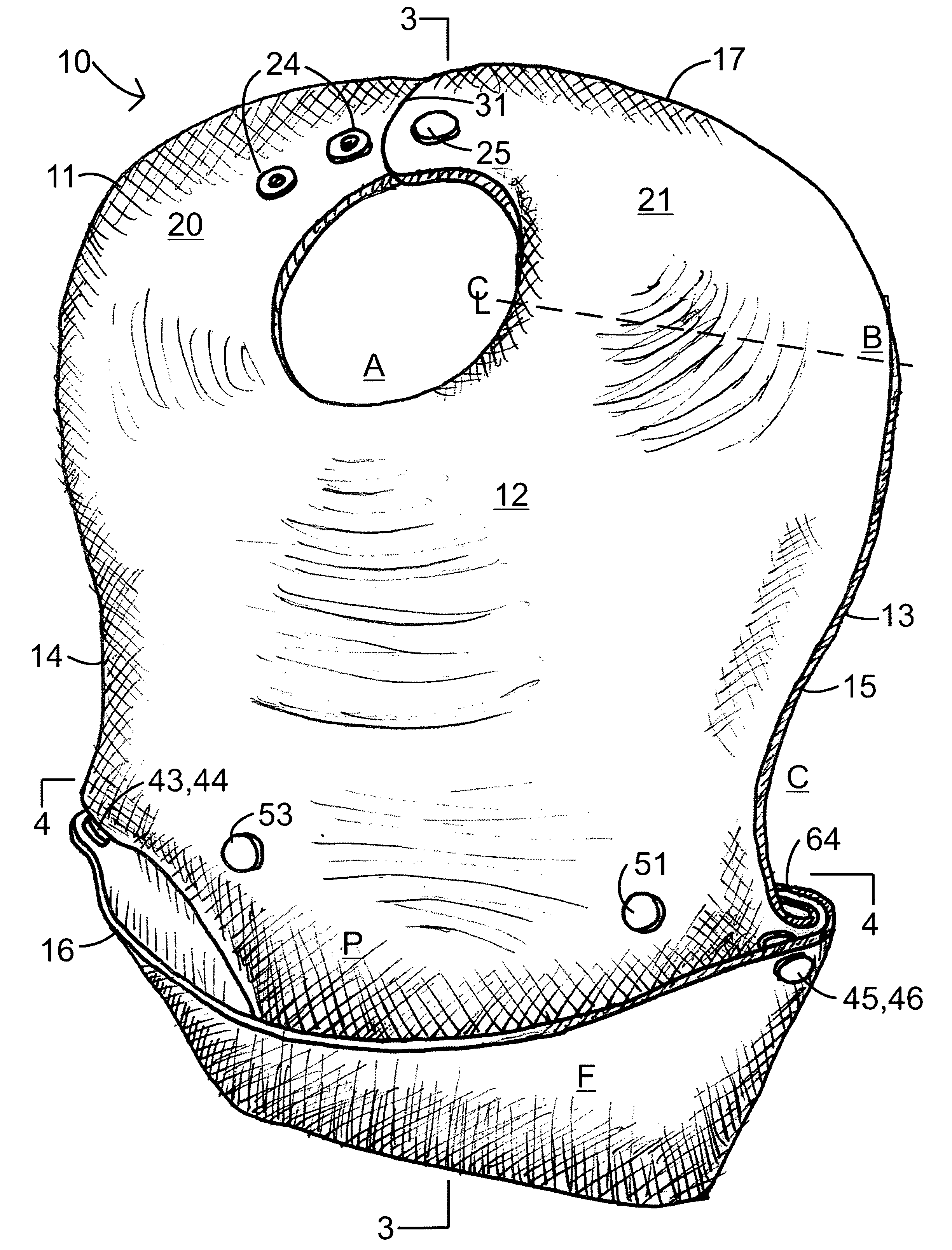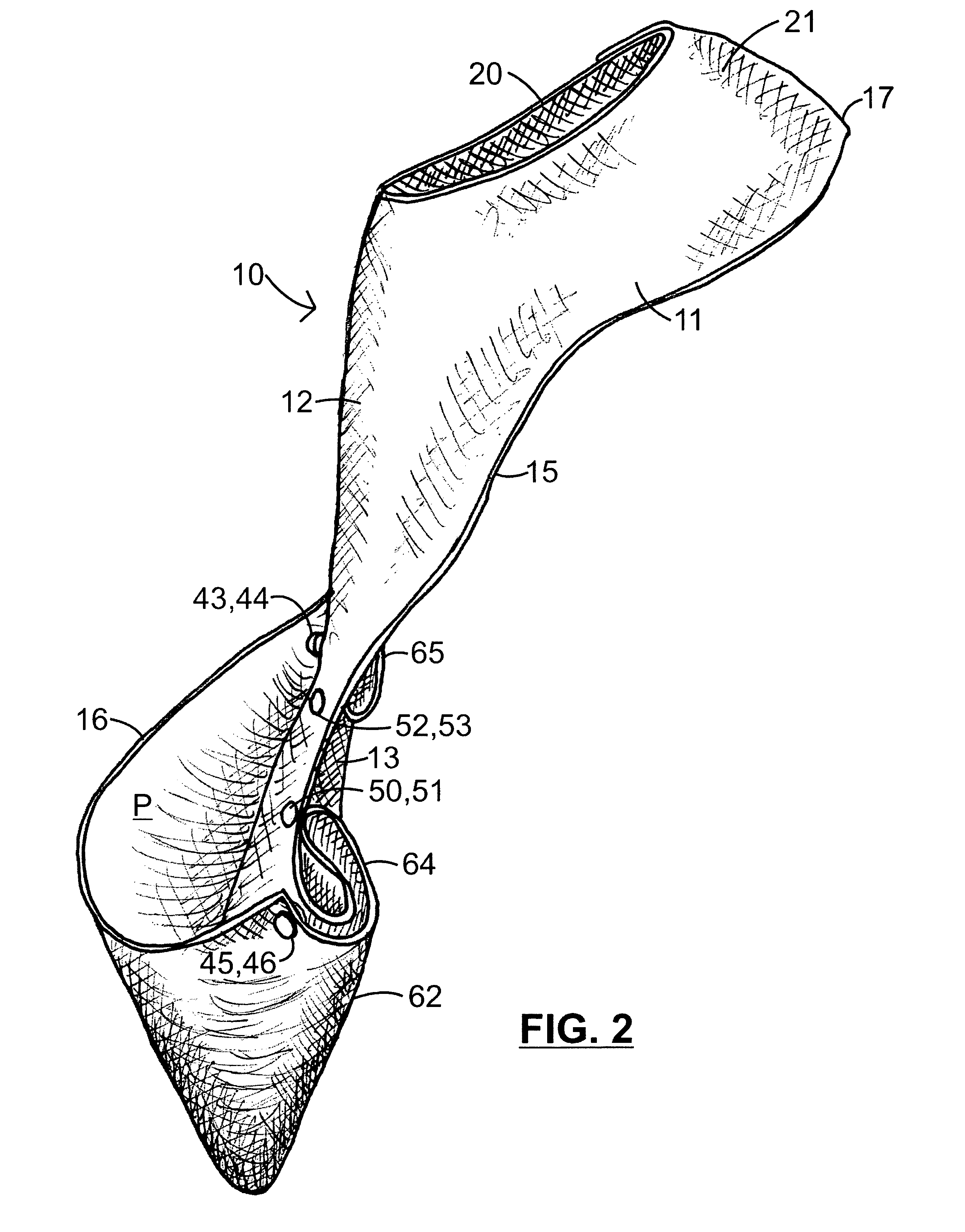Bib with an improved pocket
a technology of bibs and pockets, applied in the field of bibs, can solve the problems of not providing adequate protection for the wearer, uncomfortable and potentially unsafe for the user, and being more difficult to clean when unfastened, and achieve the effect of eliminating any folds, easy cleaning surface, and quick and easy completion
- Summary
- Abstract
- Description
- Claims
- Application Information
AI Technical Summary
Benefits of technology
Problems solved by technology
Method used
Image
Examples
Embodiment Construction
[0026]Turning to the drawings, a bib 10 is illustrated. The bib 10 has a body 11 that has a front 12 and a back 13. The body 10 further includes two opposing side edges 14 and 15, as well as a bottom edge 16, and a top edge 17.
[0027]In the preferred embodiment, the body 11 has two upper sections 20, 21. The two upper sections 20, 21 each being increasingly widening semi-circular segments are for placement on opposite sides of the wearer's neck.
[0028]Located on the two upper sections 20, 21, are cooperative snaps 24, 25. The snaps 24, 25 are located just inward from the tips 30, 31 of the upper sections 20, 21.
[0029]As best seen in FIGS. 6 and 7, the upper sections do not meet when laid flat and the opening A is substantially circular when the snaps 24, 25 are not fastened. However, as best seen in FIGS. 1 and 9, when the snaps 24, 25 are fastened together, opening A becomes elliptical in shape causing the body 11 to conform to the wearer's chest, shoulders and neck. In fastening the...
PUM
 Login to View More
Login to View More Abstract
Description
Claims
Application Information
 Login to View More
Login to View More - R&D
- Intellectual Property
- Life Sciences
- Materials
- Tech Scout
- Unparalleled Data Quality
- Higher Quality Content
- 60% Fewer Hallucinations
Browse by: Latest US Patents, China's latest patents, Technical Efficacy Thesaurus, Application Domain, Technology Topic, Popular Technical Reports.
© 2025 PatSnap. All rights reserved.Legal|Privacy policy|Modern Slavery Act Transparency Statement|Sitemap|About US| Contact US: help@patsnap.com



